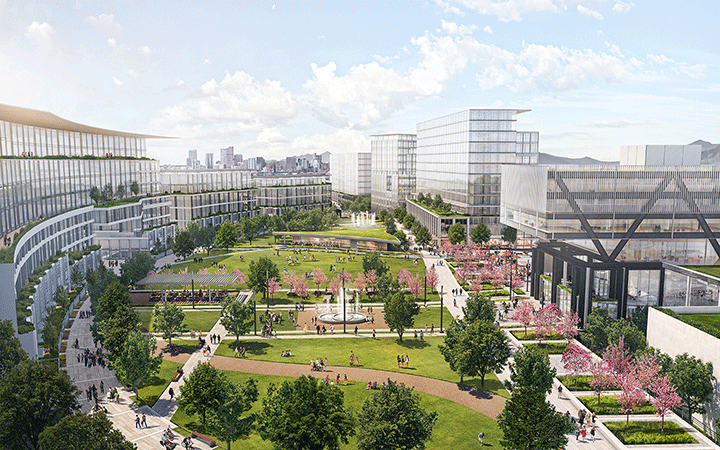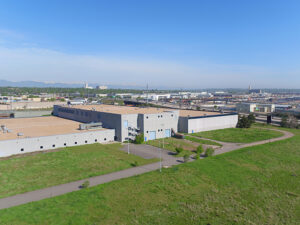
They really prioritized engaging the community from the beginning of the project” isn’t a line often spoken about developers planning a large infill project, nor is it common to see neighborhood residents lining up at a city council meeting to encourage the body to help out-of-town developers move in, but residents of Globeville and surrounding neighborhoods are overwhelmingly saying that one project–and one developer–is different from the usual herd.
LJ Suzuki, head of the Globeville First registered neighborhood organization, who gave the quote above in a recent interview with The Denver North Star, said city agencies he spoke with were confused when a developer wanted to go above and beyond what was required. When told residents were worried about displacement of renters when new, more expensive units were going to be built, the unicorn of a developer offered rental assistance in addition to other regular improvements like tree planting. Most importantly to Suzuki and other neighborhood leaders was that the outreach was proactive. Often, he explained, community groups reach out to developers and never hear back, or get a courtesy meeting at best. This, he feels, is different. “I hope it sets a new standard for developers–not just in Globeville, but across the city.”
Fox Park is a new 41-acre infill project located in western Globeville at the site of the old Denver Post facility on Fox Street in the area colloquially known as Fox Island. Today, it largely sits empty and because of its size and remoteness has become a site of criminal activity, from people scavenging copper and other materials to illegal drug deals. In the next few years, it’s likely to be transformed into a mixed use urban hub with an estimated 3,300 units that 5,000-6,000 people will call home in addition to the 34,000 square feet of retail, 80,000 square feet of culture and entertainment facilities, 14 acres of interconnected parks and open space, and other amenities.

Behind the largest redevelopment in the area are José Carredano and Manuel Jiménez of Vita Fox North LLP. Both from Mexico, they’ve moved to Denver and are designing the site in partnership with Pure Development, based in Indianapolis now with a Denver office.
Carredano and Jiménez sat down with The Denver North Star to talk about the project as well as their philosophy on development and community engagement.
“We never thought or presumed to know what [the community] wanted,” said Carredano of their outreach. He doesn’t see their engagement as unusual because it’s what he’s accustomed to in Mexico, where he said most development has more social and community aspects. As newcomers to the city, he said their first action was to “just sit down and listen.” They reached out for meetings in Globeville, but also with neighboring communities like Sunnyside, which have an interest in growth across the railroad tracks. As they heard requests from individuals and community groups ranging from tree canopies to financial assistance when property values (and therefore taxes) increase, they added more to their plan.
The G.E.S. Coalition, with their focus on stopping gentrification, renter protections, and helping lower income residents become homeowners, isn’t generally seen as a fan of developers, but their members also spoke out in favor. “Early on we were able to recognize that they were pretty different than the typical developers,” explained Nola Miguel, Executive Director of the coalition. That doesn’t mean they were throwing open the gates without firm commitments though. Like Globeville First, the coalition met with Carredano’s team repeatedly to hash out a community benefits agreement that included multiple G.E.S.-based organizations. “That little Fox Island area is very vulnerable,”
said Miguel.
One of the biggest community needs according to the coalition is helping people become homeowners, especially because the new development is expected to be all rental. To meet that goal, Fox Park is committing up to $4.25 million to a community land trust, which will manage homes for residents to purchase. The coalition launched the Tierra Colectiva community land trust on Dec. 8th. The land trust currently has a 19-member transitional board and will be facilitated by the Colorado Community Land Trust, now part of Habitat for Humanity. Tierra Colectiva’s initial funding was earmarked for Elyria-Swansea, so this funding allows them to do more in Globeville as well.
Community groups and leaders also spoke in support of Fox Park’s affordable rental housing onsite. Often setting aside a certain percentage of units for individuals and families making less than the area median income (AMI) is part of a negotiation to get higher density zoning, but the property was already zoned for higher density. Manuel Jiménez explained 7% of all units (roughly 200-250) will be reserved for residents under 80% of AMI, with 25% of those for people under 60% AMI. The developers will also pay 125% of the standard linkage fee, a development fee that helps fund affordable housing.

The one hurdle for the Fox Park developers was cleared at the end of November, when Denver City Council, following a presentation and recommendation from the Denver Urban Renewal Authority (DURA), voted to blight the area and allow Tax Increment Financing (TIF). The move makes large projects of this type easier by using future sales tax to reimburse a developer for specific project costs relative to environmental remediation and infrastructure as determined by the urban renewal authority. During the public hearing, which had seven local community speakers in favor of the action and none opposed, council heard from groups ranging from Birdseed Collective to the World Trade Center, who will also be headquartered in the area.
While several council members raised concerns about the TIF, the vote ultimately passed with only one dissenting vote–Councilwoman Candi CdeBaca, who represents the area. During her remarks, CdeBaca twice noted that her vote was not against the developers, who she praised for their community commitments, but rather against the process available to them. District 1 Councilwoman Amanda P. Sandoval, who represents adjacent communities to the west, said that while she was a council aide in District 9 she watched four previous developers start to work on the site and never engage the community. She acknowledged the outreach Carredano and Jiménez had done in neighborhoods she represents as well. Councilwoman At-Large Debbie Ortega noted that a similar TIF process was done to redevelop Stapleton (now Central Park) after the airport closed.
The area is called Fox Island because of its limited access points, though the city is looking at multiple options to connect the area to the west and north, as well as infrastructure improvements east and south. For more information on the city’s Next Steps Study, check out the piece in last month’s issue of The Denver North Star, still available online.
For more information on Fox Park, visit foxpark.com.

Be the first to comment